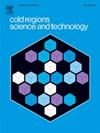Mapping winter road connections to remote First Nations communities in Canada
IF 3.8
2区 工程技术
Q1 ENGINEERING, CIVIL
引用次数: 0
Abstract
Winter roads are seasonally constructed transport routes over frozen land, lakes and rivers, allowing heavy and voluminous goods to reach remote Canadian First Nations communities in a practical and relatively affordable way. As climate change in sub-Arctic regions leads to the most pronounced temperature increases in winter, it results in shorter operating seasons and threatens essential supply and access routes. Different systems of funding and documenting this infrastructure have left an inconsistent federal record of varying temporal and spatial accuracy. Here, we have assembled a dataset that presents verified winter roads to First Nations communities for the 2022–23 season, categorised by surface type land, river ice, and lake ice. Newly constructed all-season roads and previously undocumented local roads are included, as are ice crossings connecting permanent highways. Current location and distance information can thus be derived from this easily updated dataset and used as a base for further analysis and infrastructure planning as part of a strategy to supply and connect remote First Nations.
绘制冬季道路连接到加拿大偏远的原住民社区的地图
冬季公路是季节性修建的运输路线,穿越冰冻的土地、湖泊和河流,使笨重的货物能够以一种实用且相对经济实惠的方式到达偏远的加拿大第一民族社区。由于亚北极地区的气候变化导致冬季气温上升最为明显,这导致作业季节缩短,并威胁到基本的供应和通道。不同的资助和记录基础设施的系统留下了不一致的联邦记录,时间和空间的准确性各不相同。在这里,我们组装了一个数据集,该数据集显示了2022-23赛季通往第一民族社区的经过验证的冬季道路,并按地表类型陆地、河冰和湖冰进行了分类。包括新建的全季节道路和以前未登记的当地道路,以及连接永久高速公路的冰道。因此,当前的位置和距离信息可以从这个易于更新的数据集中获得,并作为进一步分析和基础设施规划的基础,作为供应和连接偏远第一民族战略的一部分。
本文章由计算机程序翻译,如有差异,请以英文原文为准。
求助全文
约1分钟内获得全文
求助全文
来源期刊

Cold Regions Science and Technology
工程技术-地球科学综合
CiteScore
7.40
自引率
12.20%
发文量
209
审稿时长
4.9 months
期刊介绍:
Cold Regions Science and Technology is an international journal dealing with the science and technical problems of cold environments in both the polar regions and more temperate locations. It includes fundamental aspects of cryospheric sciences which have applications for cold regions problems as well as engineering topics which relate to the cryosphere.
Emphasis is given to applied science with broad coverage of the physical and mechanical aspects of ice (including glaciers and sea ice), snow and snow avalanches, ice-water systems, ice-bonded soils and permafrost.
Relevant aspects of Earth science, materials science, offshore and river ice engineering are also of primary interest. These include icing of ships and structures as well as trafficability in cold environments. Technological advances for cold regions in research, development, and engineering practice are relevant to the journal. Theoretical papers must include a detailed discussion of the potential application of the theory to address cold regions problems. The journal serves a wide range of specialists, providing a medium for interdisciplinary communication and a convenient source of reference.
 求助内容:
求助内容: 应助结果提醒方式:
应助结果提醒方式:


